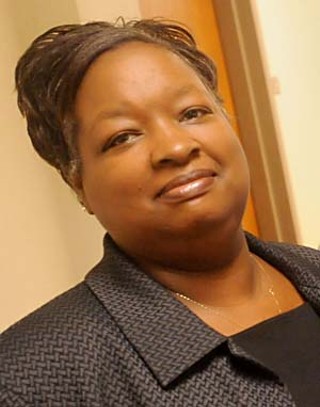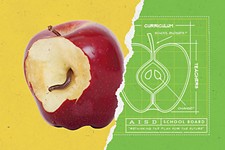AISD: Balancing Teachers and Tech
AISD must ensure that new technology helps more than it hurts
By Richard Whittaker, Fri., Nov. 26, 2010

Students' test scores are up, but there's room for improvement: That was the message at the heart of Austin Independent School District Superintendent Meria Carstarphen's second State of the District Address. Yet a key part of her solution – to integrate technology deeper into the curriculum – could create new recurring costs just as the district is contemplating personnel cuts.
The Nov. 18 address was intended primarily to release the district's annual report and its new score card, both available at www.austinisd.org. But the center of Carstarphen's talk was the joy of educational technology. After the last notes of the All City Band's rendition of "Thus Spake Zarathustra" died away, she explained to the invited guests gathered in the UT Alumni Center that she regards improving students' interest and scores in math and science as pivotal in preparing them for a global economy. Using one of the district's new classroom "Innovation Stations," Carstarphen gave a multimedia presentation before fielding questions from the audience posed via iPod Touch. There was even a teleconference by Skype with the rocket science class at Akins High. The next day, the district announced the delivery of 7,500 netbooks as part of the Computers on Wheels program; it will be the first round of a total of 20,000 new computers scheduled to hit district classrooms by spring break 2011. AISD board President Mark Williams said, "The emphasis [of the speech] was primarily on some of the opportunities that we have going forward, particularly as it appertains to technology and creating this concept of changing with the world."
Education Austin co-President Rae Nwosu had a mixed response to Carstarphen's speech. "It was good for people to hear where we've made gains," she said. However, she added, "I didn't hear what I thought I was going to hear, which is how do we move from here, and how do we fix where we are now."

Carstarphen barely mentioned the district's looming budget problems until 50 minutes into her hourlong presentation. When she did broach the subject directly, the numbers were galling. Carstarphen said the district currently faces a $50 million to $60 million shortfall in the next academic year, and so far staff and the board have only identified $20 million in savings. "What she didn't do," said Williams, "is frame that conversation about how nasty will it be, and is it reasonable to maintain the same expectations we've had all along, when the reality is that the resources are going to be constrained."
For Nwosu, the speech didn't quite reflect where the district's priorities really are at the moment. Both in the boardroom and the classroom, she said, "you're not hearing a lot about the technology and how it's getting to the kids, although that's a part of it that we heard a lot about today. The most important thing is what are we going to do with the budget deficit and jobs over the next year or two."
Historically, AISD has paid for IT equipment such as classroom computers with bonds – that's how the district raised $70 million in 2008 for such systems as the new netbooks and the Innovation Stations like the one Carstarphen used to deliver her address. If the district is going to integrate more classroom tech into the curriculum, that means more staff will be required to maintain it and more equipment will become obsolete and require replacement – all of which might be better funded with recurring operational spending rather than one-off bonds. If such a shift were to occur, technology investment would represent a major new component of regular spending, which could require some creative thinking about shifting the tax rate or finding alternative investment.
Figuring out how to pay for a tech-savvy school system isn't a new conundrum. Back in 2008, members of the citizens' bond advisory committee voiced concerns that the bonds would pay for new computers but not the staff to support them. The district currently only has 28 computer technicians to handle all its support work, including maintaining classroom and administration machines. At the time, committee member Rudy Montoya warned the board, "You wouldn't buy buses and not hire bus drivers." (See "Citizens' Committee Shuffles AISD Bonds," Jan. 18, 2008.) A year later, the board was divided over whether bond money – generally intended for concrete infrastructure like buildings and buses – should really be spent on quasi-disposable technology like the new netbooks (see "AISD Working Out Technology Costs and Kinks," July 10, 2009).
Williams said he hopes that by emphasizing Austin as a tech center, the district can attract more philanthropic involvement from computing companies, as well as additional volunteering and student mentoring by their staff. Corporate donations like the 50 Young Explorer stations donated by IBM to East Austin elementaries last year could become pivotal in implementing Carstarphen's tech-friendly future, especially since the state has its own projected deficit – currently standing at $25 billion – to deal with. Since the state's technology allotment is one of the few parts of education spending that is discretionary, it could be one of the first line items cut. Williams said, "We're still trying to sort out what the implications are, both of what we need to do from a planning standpoint and what the implications of the Legislature's actions are going to be."
Nwosu was also concerned that costly technology investments may come at a time when the district is forced to lay off staff. The trustees are scheduled to discuss a potential declaration of financial exigency in January that, if adopted, would give them the power to make sweeping program changes and cancel employee contracts. Education Austin is already protesting plans to change the school day. Currently, the district allows teachers two 45-minute planning periods per day, but the district is considering cutting that to the state-required minimum of one. Nwosu warned that requiring teachers to take on extra classes, along with increased class sizes, could threaten the strength of teacher-student relationships, and that's something technology cannot replace. She said, "A person who says that teacher-student ratios don't matter, that's the person that needs to go and sub in a high school where there [are] 40 kids in a classroom."
Got something to say on the subject? Send a letter to the editor.










